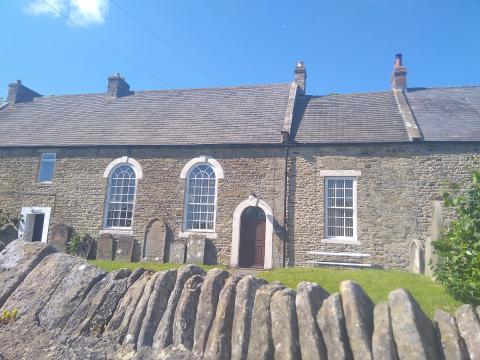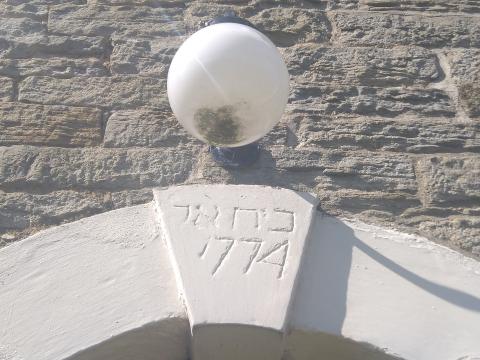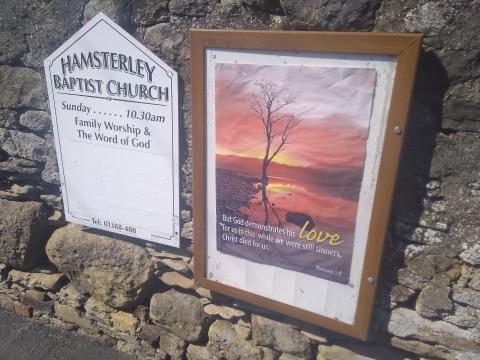Hamsterley Baptist

I recently came across Hamsterley Baptist Chapel, a pretty little place in County Durham. The chapel’s date stone says 1774, though the fellowship began in 1715, a plant from the Bitchbirn Baptist chapel. This was in turn planted by Baptist evangelist Thomas Tillam at the time of Oliver Cromwell. The church’s website is quite limited, speaking mainly of its history, and like most of our chapels, it might seem to be past its best years.
On the datestone were some strange markings which I rightly deduced were of the Hebrew tongue. Tillam, the church’s ‘grandfather’, had engaged in some controversy as a ‘seventh-day Baptist’ (ie Saturday is the Sabbath) and involved himself with the ‘False Jew of Hexham’. It goes to show that penchants and fascinations with our faith's Judaic roots are nothing new. It might therefore be appropriate that some mysterious Jewish lettering be found on a chapel deriving from his labours. Being no Hebraist, it took me some time to realise it said Bethel. This means ‘House of El’ or ‘House of God’ (בֵּית אֵל ḇêṯ'êl) and is the name given by Jacob to the spot upon which he had his famous dream of the staircase to heaven.
Hamsterley’s website somewhat apologetically states that ‘…by the middle of the nineteenth century the ‘glory days’ of Hamsterley had come to an end’. Be that as it may, if it remains a place where Christ, the ladder to heaven is proclaimed, preached, shared and loved, then a true Bethel shall it remain. Real Bethels are often found in the poorest of places, attended by only a handful of ordinary folk. Better to attend a fading Bethel than a splendid cathedral which never knew Him.


- Log in to post comments


 Sunday Worship 10.45am & 6.00pm
Sunday Worship 10.45am & 6.00pm